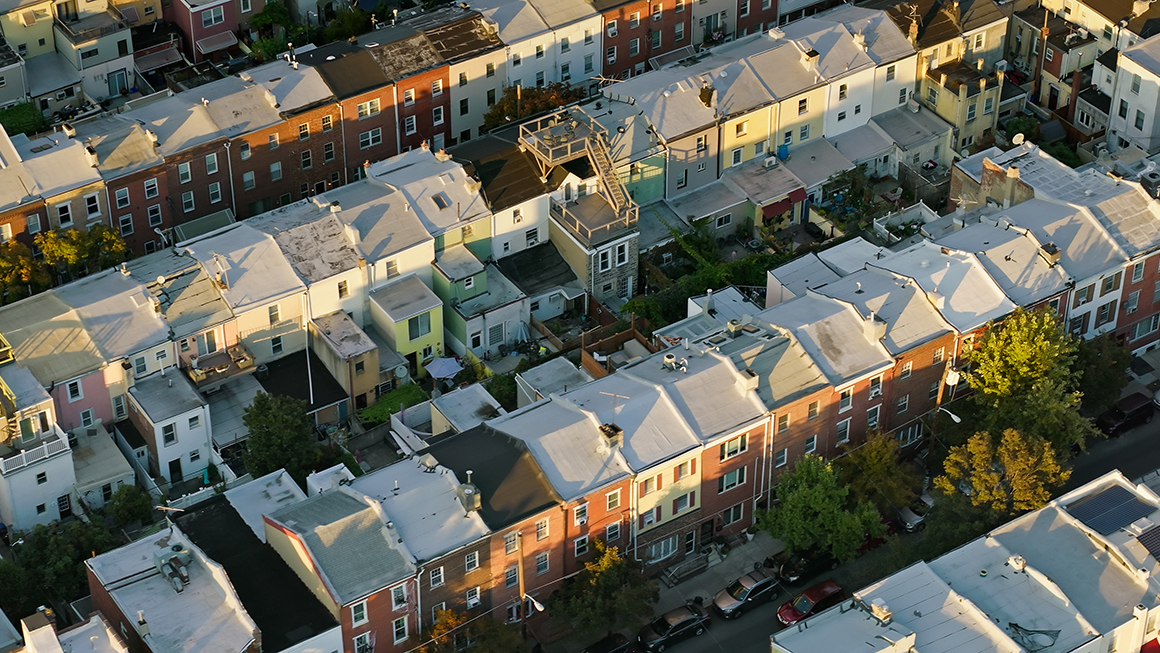
More than 40 million Americans, including both renters and homeowners, are struggling to afford housing costs. In a recent poll (PDF), most registered voters in five key battleground states reported that addressing housing costs would improve their personal situations. Yet 52 percent of those voters said they hear politicians talk about the cost of rent and housing “not much” or “not at all.”
With Election Day fewer than three months away, candidates up and down the ballot looking to speak to issues that voters care about should consider supporting solutions to the affordable housing crisis.
Permanently affordable housing, or housing that is insulated from the private, speculative market, is one solution to the housing crisis that both Democrats and Republicans favor. Sixty percent of Republicans who participated in the recent poll reported they would be more likely to vote for a candidate who supports permanently affordable housing. (Although the poll reports that permanently affordable housing is popular among Democrats, it does not provide specific figures.)
Expanding the nation’s stock of permanently affordable housing is one way to decommodify housing, or decouple access to housing from the ability to pay for it. In recent research, we identified developing new permanently affordable housing units as one of three key strategies that state and local governments are pursuing to decommodify housing. Here we highlight promising, federal-level policy proposals that candidates for the presidency and other offices could use as starting points for creating policy platforms that address the most pressing issues on voters’ minds.
Build new, permanently affordable housing
Creating new permanently affordable housing units is the most direct way for the federal government to support decommodification. One recent proposal suggests the federal government might accomplish this by creating a federal Green Social Housing Development Authority (PDF).
Such an authority could build and preserve between 1 and 1.8 million units of permanently affordable housing over 10 years with an estimated $30 billion annual federal investment. The authority would serve as a vehicle for the federal government to acquire distressed real estate, public land, investor-owned vacant properties, expiring low-income housing tax credit properties, and properties with track records of landlord exploitation and repair and retrofit them. Then the authority would transfer the properties to tenants, resident-owned cooperatives, public housing authorities, local governments, community land trusts, or nonprofit housing service providers.
It’s estimated that a Green Social Housing Development Authority could create up to 615,000 jobs annually and help accelerate the transition to renewable energy.
Provide funding for state and local actors to develop permanently affordable housing
Instead of or in addition to building new housing itself, the federal government could fund state and local entities to develop permanently affordable housing in their communities. President Biden has already proposed doing so: as we wrote earlier this year, the president’s fiscal year 2025 budget requested $20 billion for increasing the housing supply, including by providing grants to state and local governments to build more permanently affordable housing.
Some local governments are already experimenting with developing permanently affordable housing even without federal assistance. Montgomery County, Maryland, created a $100 million revolving loan fund in 2021 to build new mixed-income, mixed-use developments. The county retains majority ownership of these developments and requires that 30 percent of the units in each building be reserved for people with low incomes.
Other local governments have become interested in developing permanently affordable housing as a result, and federal funding could provide a significant boost to these emerging efforts.
Build capacity for democratic community control of housing
Advocates argue that decommodification entails not just removing housing from the private, speculative market but also empowering residents to have a say in where and how they live. As a result, many proposals for permanently affordable housing incorporate aspects of democratic community control, such as tenant leadership boards.
The federal government could help build residents’ and communities’ capacities to engage in these models by providing technical assistance and funding initiatives to drive community engagement and organizing. The National Homes Guarantee (PDF) campaign, for instance, called for federal grants for legal and technical assistance to support tenant organizing and the formation of cooperatives in new social housing as well as existing public and subsidized housing.
As recent polling makes clear, permanently affordable housing is one solution to the housing crisis that voters on both sides of the aisle support. One way presidential candidates—as well as those down the ballot—could consider appealing to cost-burdened voters is by supporting sustainable, community-centered solutions to the affordable housing crisis like those highlighted above.
Let’s build a future where everyone, everywhere has the opportunity and power to thrive
Urban is more determined than ever to partner with changemakers to unlock opportunities that give people across the country a fair shot at reaching their fullest potential. Invest in Urban to power this type of work.